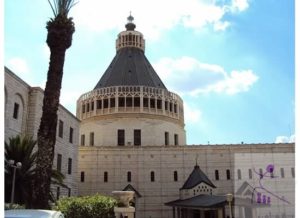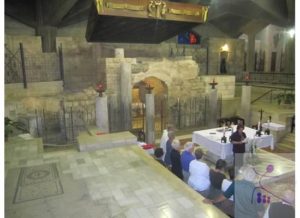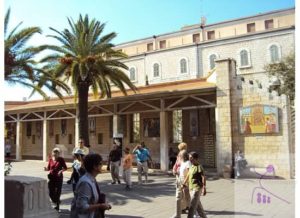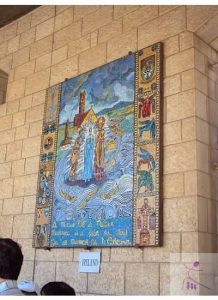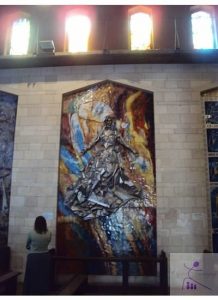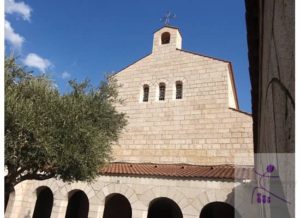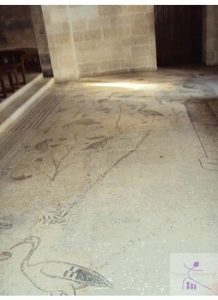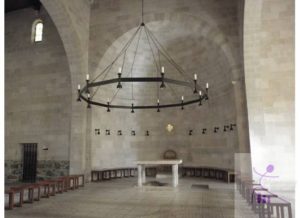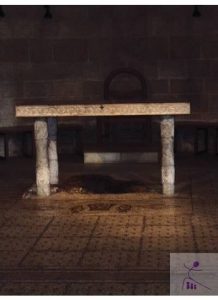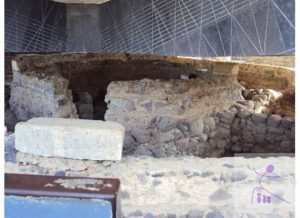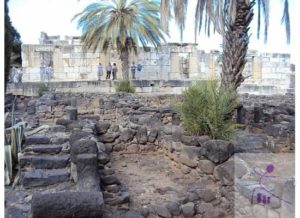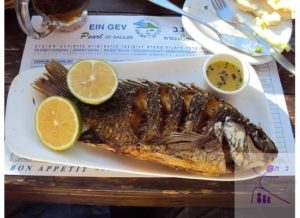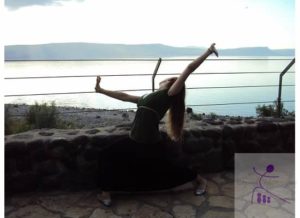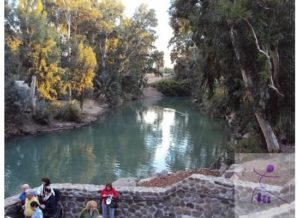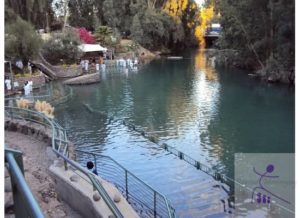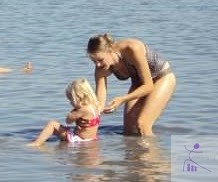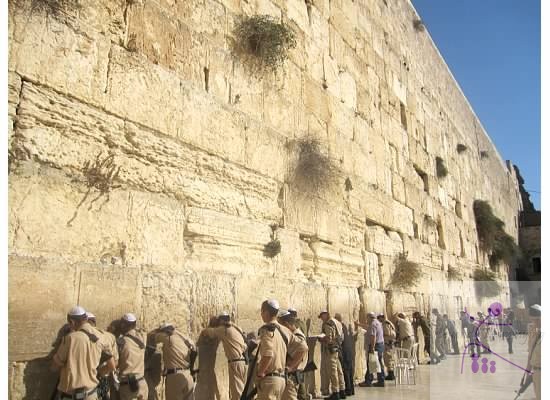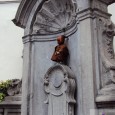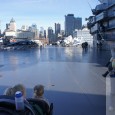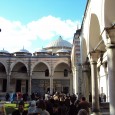I’m not a very religious person but I am fascinated by history and so our Holy Land cruise was, for me, a walk through history. Seeing the places where Jesus, Mary and Joseph (the real, live people) walked and lived was really exciting for me.
Before we visited Jerusalem, we spent a day exploring the Galilee Region which is where Jesus is assumed to have lived the majority of his life and includes Nazareth, Capernaum and the area of the Jordan River where he was baptized. We visited all three (plus more!)
The day was a long one with a lot of in and out of the car which was sometimes a struggle with the girls who were only a little over 3 and 15 months at the time. But luckily we had booked a private tour (since there were seven of us total with my parents and sister) and so weren’t on a strict time schedule or itinerary.
After being picked up at our ship in the Port of Haifa, our first stop was the Basilica of the Annunciation in Nazareth. The Basilica is at the supposed spot where the annunciation occurred. The current church was built in 1969 at the site of an earlier Byzantine-era and crusader-era churches and around the grotto of the annunciation which is believed to have been the childhood home of Mary. Being a more modern structure the church comprises many modern elements but the history is still very present and I was a bit overwhelmed by the beauty and juxtaposition of the new structure surrounding the ancient history. Outside the church there is a courtyard containing many mosaics from countries all over the world depicting the annunciation with the biggest (including the USA) being displayed inside the church. We had a good time taking the girls around to each mosaic and seeing each culture’s uniqueness and discussing each place we’d been with Honeybun, reminding her of all she had seen.
Our next stop was the Church of the Multiplication which is the assumed location of where Jesus performed the miracles of the Loaves and Fishes. The current church (completed in 1982) is built in the form of the original Byzantine church and the altar covers the stone in which the miracles are believed to have occurred as well as the original mosaic tile work on the floor which has been excavated including a mosaic of the loaves and fishes.
We then headed to the seaside village of Capernaum which was my favorite stop of the entire day. Capernaum, which was home to St. Peter and, at times, Jesus is now in ruins but that is why I loved it: It is what it was. Much like Ephesus and the ruins of Athens and Rome, it has merely been uncovered and left to the imagination of what it used to be (aside from the house of Peter which is housed in a modern church). Many carved stones are displayed, the ancient synagogue is still there and the foundations of the houses are visible and you can wander the streets as people did thousands of years ago which we all really enjoyed.
We stopped for lunch at a nice restaurant on the Sea of Galilee where we enjoyed some St. Peter’s Fish (which depending on who you ask is tilapia or John Dory) and a beautiful setting where I snuck in a few pictures for my dance program The Water Project.
Our last stop for the day was at the Jordan River at the assumed spot of Jesus’ baptism. The water was a gorgeous blue-green and the tropical setting in the middle of the desert was breathtaking. My sister got the honor of explaining to Honeybun why the people were being dunked in their clothes and we all took in the serenity at the end of a long and busy day but the history we saw was worth it!

